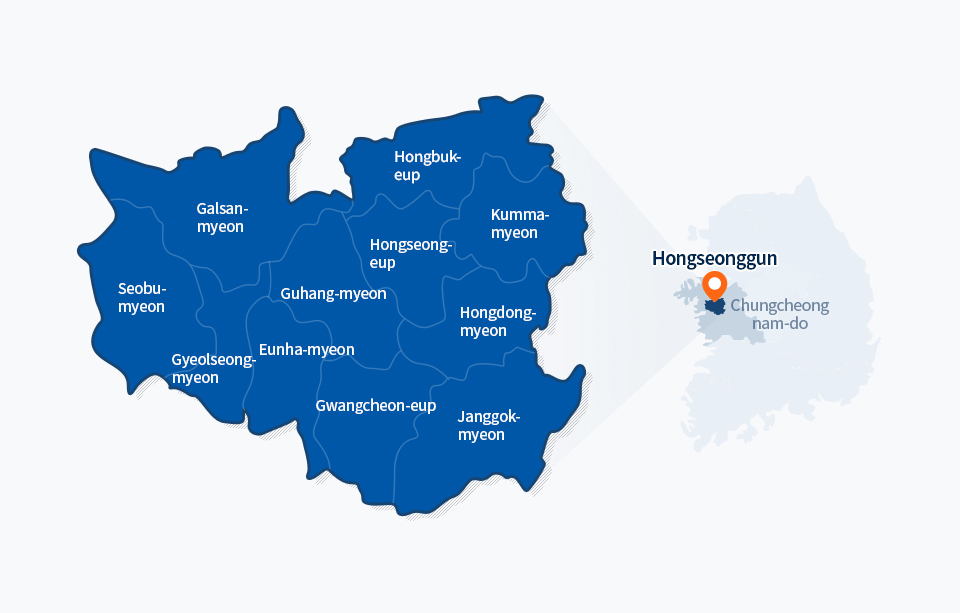General Information

Geographical Characteristics
The heart of the west coast region of Chungcheongnam-do Province and a transportation hub
Location
It is adjacent to Yesan-gun in the east, Seosan-si in the west, Cheongyang-gun in the east and Boryeong-si in the south.
Transportation
National Road No. 21 runs between north and south, while National Road No. 29 extends from west to east. Rural Road No. 609 and 614 and the Janghang Line (railroad) pass through the area. Seohaean Expressway was opened to the public in 2002, and two interchanges were constructed (Eunha and Galsan).
Topographical and Geographical Features
It is a hilly area with Bongsusan Mountain (484m) in the east, Baegwolsan Mountain in the west (394m), Oseosan Mountain (790m) in th south, and Yongbongsan Mountain (374m) in the north. The hills are characterized by relatively gentle slopes and are adjacent to the Cheonsuman Bay.
Historical Characteristic
The center of administration
The Place of Governors
30 state-run institutions
The Birthplace of Notable Figures
Choi Young, Seong Sam-mun, Kim Jwa-jin, Han Yong-un, Kim Bok-han, Hongju Righteous Army, etc.
Cultural Characteristics
The origin of the Naepo and Hongju culture
Cultural and Historical Sites
43 sites (9 national and 34 provincial sites)
Yongdaegi-nori
Awarded the Minister of Culture and Public Information Prize at the National Folk Arts Awards (1981)
Gyeolseong-nongyo
Awarded the Presidential Prize at the National Folk Arts Awards (1993) The home of Han Seong-jun, the master of traditional Korean dance, and Choi Seon-dal, the master of Joseon pansori